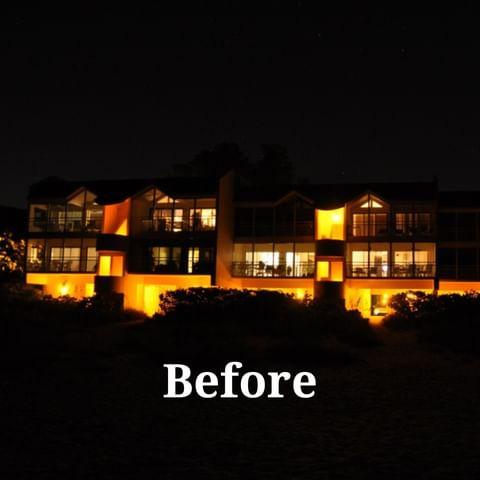Do your pets need blue-blockers?
My opinion of blue blockers for families, a roundup of my Fall activities, and lots of circadian and quantum biology learning opportunities
Blue blocking glasses have proven useful as an alternative to enforced darkness regimes in acute mental health situations1. They can also be helpful for everyday use, as my new Substack friend Dr. Catherine Darley recently wrote about here.
Anectdotally, I know personally that blue-blocking have helped many, many people improve their sleep and overall wellbeing.
However, I don’t generally recommend these glasses to families for everyday use.
These glasses have become kind of an icon of the circadian lifestyle, and I have used them in the past myself. However, I’ve grown away from them and a lot of that has to do with my growing family.
Here’s why I don’t think blue-blocking glasses work well for most families:
Babies and young kids, who are the least likely to wear their glasses, are most vulnerable to circadian disruption from light at night2.
The skin has photoreceptors3, too, and glasses don’t cover them.
Light can still trigger cortisol release if it is too bright, even if it doesn’t contain any blue frequencies.4
The larger the family—and especially if the family has anyone requiring prescription lenses—the cost of quality blue-blocking glasses can be quite high once you start thinking about replacements when glasses get lost, broken, or the prescription changes.
And here’s what I recommend instead of blue-blocking glasses:
One thing only: Tune the entire household nighttime light environment.
Designing a completely circadian nighttime light environment for your family is well worth the effort.
What would an ideal circadian night look like?
A nighttime light environment should have lighting that is warm, low, and shielded. In other words:
A) The lighting sources should have similar tones as candle light (“warm”). This is to keep the pineal gland in the brain in melatonin secreting mode between sunset and dawn.
B) The lighting sources should be below eye level. This is because we actually have different kinds of photoreceptors that are attuned to measuring the angle of the lighting to predict the time of day (rising, noon/overhead, or falling). So, keeping the light sources lower than eye level triggers that part of the lighting sensing system to think it is evening.
C) The lighting sources should illuminate what you need to see, and nothing else. This is wisdom from the Dark Sky community. Shielded lighting reduces light pollution because the light shines where it is needed and is blocked from shining anywhere else.
There’s a lovely photo series showing entire communities who have committed to circadian outdoor lighting for baby sea turtle safety here:
Here is a really simple statement to guide your work:
Circadian nights should be dimmer, cooler, and quieter than days.
D) If you have a lot of light pollution from outdoors, invest in blackout curtains. Just remember to open them at dawn.
If you are new to Brighter Days, Darker Nights, check out my Start Here post for more general info about how the method I have come to across my years of experimenting with living and sharing this lifestyle works for everyone within it (including pets and guests!) and How to give circadian pregnancy support for parents who are ttc.
Autumn Roundup:
Podcast interview on Modern Circadian Moms all about Newborn Jaundice and the Quantum Newborn Jaundice Course here on Brighter Days, Darker Nights.
And one of my IG posts recently got more attention than almost anything I have ever posted over there! Here’s where you can join that conversation (this is where I also bumped into fellow Substack writer I cited earlier in this post Dr. Catherine Darley who is also a published researcher about sleep and melatonin5) :
If you are an IG fan, be sure to follow my page to catch the IG Live I’m going to be doing with Amy Jaramillo of Body Motion, Love Mechanics where we will be sharing our personal experiences with living the circadian and quantum lifestyle through our pregnancies. This will be Nov. 30th at 9 am Pacific.
Other upcoming events:
Dec. 6th: Latitude, Melanin and Fertility Class. Register here.
Jan. 7th: Circadian and Quantum Shift Work (including Parenting!) Class. Register here.
TBD: I recently recorded interviews with The Road To Wisdom Podcast and Quantum-ly Nourished. These will be out soon.
Brighter Days, Darker Nights in print:
Find my essay in the Moonseeds Menstrual Calendar and Planner for 2024. Use code NIKKO5 for 5% off all services at moonseeds.love.

And a new 1-1 offering:
I just launched a new service to support families as well as other perinatal wellness workers. I’m calling this Virtual Doula Wellness Visits, and you can learn more about them on my website:
Thank you for reading along today!
Walker, W. H., 2nd, Walton, J. C., DeVries, A. C., & Nelson, R. J. (2020). Circadian rhythm disruption and mental health. Translational psychiatry, 10(1), 28. https://doi.org/10.1038/s41398-020-0694-0
Chellappa S. L. (2021). Individual differences in light sensitivity affect sleep and circadian rhythms. Sleep, 44(2), zsaa214. https://doi.org/10.1093/sleep/zsaa214
Suh, S., Choi, E. H., & Atanaskova Mesinkovska, N. (2020). The expression of opsins in the human skin and its implications for photobiomodulation: A Systematic Review. Photodermatology, photoimmunology & photomedicine, 36(5), 329–338. https://doi.org/10.1111/phpp.12578
Figueiro, M. G., & Rea, M. S. (2010). The effects of red and blue lights on circadian variations in cortisol, alpha amylase, and melatonin. International journal of endocrinology, 2010, 829351. https://doi.org/10.1155/2010/829351
Minich, D. M., Henning, M., Darley, C., Fahoum, M., Schuler, C. B., & Frame, J. (2022). Is Melatonin the "Next Vitamin D"?: A Review of Emerging Science, Clinical Uses, Safety, and Dietary Supplements. Nutrients, 14(19), 3934. https://doi.org/10.3390/nu14193934








Terrific article Nikko - really appreciate highlighting that the angle of light is important too. Shine on!